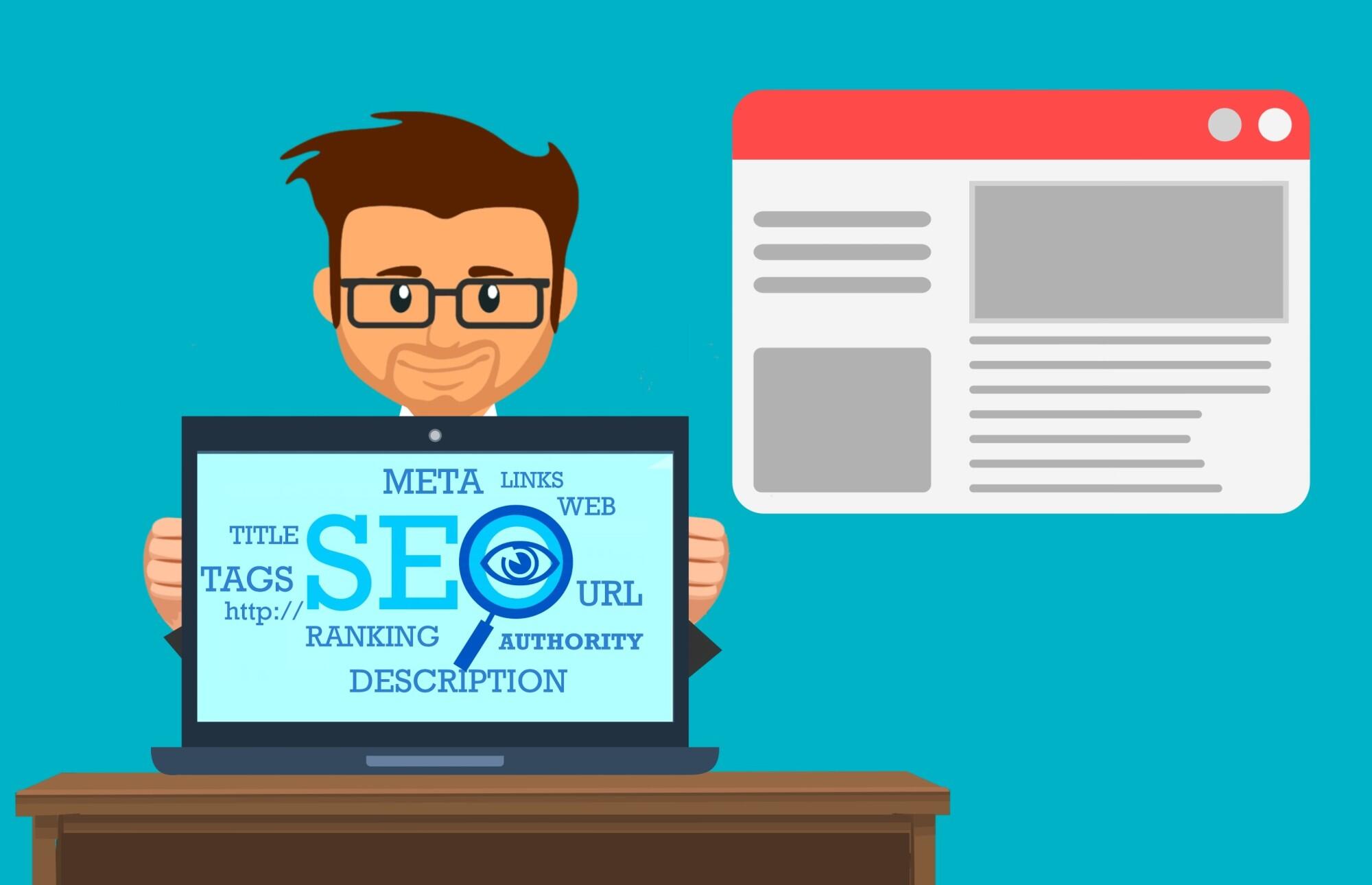The Benefits of Choosing an Organic SEO Services Company
Posted on May 30, 2024 by Logo Design Tips and Tricks

Are you struggling to boost your online presence?
Choosing an organic SEO services company can be the game-changer you need. These experts help increase your website’s visibility naturally. No tricks. Just proven methods. They tailor strategies that drive real, lasting results.
Ready to see your business grow? Let’s get started today!
Improved Search Engine Rankings
Improved search engine rankings mean your website shows up higher when people search online. This is important because most people click on the first few links they see. If your site is one of them, more people will visit.
Experts use simple steps to make this happen, like using the right keywords and making the site easy to use. The higher you rank, the more visitors you’ll get, and that means more chances to grow your business.
Cost-Effectiveness
One of the main benefits of online marketing is cost-effectiveness. Traditional marketing methods like TV ads and print media can be expensive. Online marketing, on the other hand, is more affordable. Social media, email marketing, and SEO are low-cost or even free tools that can be very effective.
Cost-effectiveness also means getting more value for your money. Online marketing allows for better targeting of specific audiences. Additionally, you can track and measure the results easily. This helps you to adjust your strategies and improve your campaigns over time.
Enhanced User Experience
Enhanced user experience means making your website a nice place to visit. When people come to your site, they should find it easy to use and understand. This can be done by making sure the pages load quickly and look good on all devices, like phones and tablets.
Simple navigation is key, so visitors don’t get lost or confused. Clear, straightforward language helps too, so everyone gets the message without hassle. Happy users are more likely to stay longer and come back again, which is great for your business. Making the user experience better is a win-win for both you and your visitors.
Targeted Traffic
Targeted traffic is an essential aspect of Internet marketing. It involves attracting visitors who are genuinely interested in your products or services. This increases the chances of conversions. Using specific keywords and tailored content helps in achieving this goal.
Social media ads, email campaigns, and SEO are effective tools. They help reach the right audience with the right message. When traffic is targeted, your marketing efforts become more efficient. This leads to better results and higher return on investment.
Brand Credibility and Trust
Brand credibility and trust are essential for building a loyal customer base. When people trust your brand, they are more likely to buy from you. An organic SEO services company can help improve your online presence. This makes your brand appear more credible.
Simple and honest communication also builds trust. Quality products and good customer service further strengthen that trust. Consistent branding across all platforms creates a reliable image. Over time, these efforts make your brand both credible and trustworthy.
Sustainable Results
Sustainable results are a key benefit of digital marketing. With effective strategies, your efforts can have a lasting impact. Consistent content updates keep your audience engaged. SEO techniques ensure that your website remains visible. Social media platforms help maintain customer relationships.
Email campaigns can nurture leads over time. Digital marketing offers tools to track and measure success. This data helps refine and improve strategies. Long-term results come from ongoing attention and adjustments. Sustainable results mean better growth and stability for your business.
Competitive Edge
A competitive edge sets your business apart from others. It makes your brand more attractive to customers. You can achieve this through unique products or services. High-quality customer service also offers an advantage.
Consistent innovation keeps you ahead of the competition. Use customer feedback to improve and adapt. A strong online presence builds trust and credibility. These efforts help you stay ahead in the market.
Measurable Results
Measurable results are an important benefit of digital marketing. They help you see the impact of your efforts. With SEO expertise, you can track website traffic easily. You can also measure user engagement. Tools like Google Analytics provide valuable data.
This data shows what is working and what is not. You can adjust your strategies based on this information. Measurable results ensure you make informed decisions. This leads to better outcomes and higher success rates.
Adapting to Algorithm Changes
Adapting to algorithm changes is super important for staying on top of search results. Search engines like Google often update how they rank sites. When this happens, you need to adjust your website to keep it visible. This means updating content, checking keywords, and making sure links work well. It’s about being flexible and quick.
Using a service like LinkDaddy can help. They know the latest changes and can guide you through them. This way, your site stays up-to-date and keeps getting traffic. Being prepared for these changes makes sure your business stays strong and grows.
Higher Conversion Rates
Higher search engine rankings often lead to higher conversion rates. When users find your website easily, they are more likely to trust your brand. Trust plays a key role in purchasing decisions. Optimized websites provide relevant and useful information.
This helps users make informed choices. As a result, more visitors turn into customers. Organic SEO brings quality traffic to your site. Quality traffic is more likely to convert into sales. Simple and user-friendly sites also enhance the conversion process.
Return on Investment (ROI)
Better Return on Investment (ROI) is a key benefit of organic SEO. It helps attract free, ongoing traffic to your site. This reduces the need for expensive paid ads. With organic SEO, you invest once and see results over time. It provides lasting benefits.
This leads to a higher ROI compared to other marketing methods. Simple, long-term strategies ensure you get the most value for your money. Everyone wants to see a good return on their investment. Organic SEO delivers this efficiently.
Discover All About Organic SEO Services Company
Organic SEO services companies offer valuable benefits. They improve search rankings and online visibility. These companies help build brand credibility and trust. They provide sustainable and measurable results. Adapting to algorithm changes becomes easier. An organic SEO services company is a smart investment for long-term growth.
Did you find this article helpful? Check out the rest of our blog for more!
Why You Need a Car Accident Lawsuit Lawyer: Understanding Your Rights
Posted on May 22, 2024 by Logo Design Tips and Tricks

Have you been in a car accident recently? Dealing with the aftermath alone can be overwhelming. A car accident lawsuit can cover your losses. But, do you know how to navigate the legal process?
That’s where a car accident lawsuit lawyer comes in. They can handle the tough stuff for you. Ready to learn how they can help? Read on to find out more.
Expert Knowledge of the Law
Car accident lawsuit lawyers have a deep understanding of the law. They know what evidence you need to collect. They can help you file all the necessary paperwork. Lawyers also know the deadlines you have to meet. Their knowledge makes the legal process smoother for you.
They can guide you through each step with expert representation. It is also their job to fight for your rights. They will ensure that the other party is held accountable. Your lawyer can negotiate with insurance companies in your best interest. Having a lawyer means you can focus on your recovery.
Effective Negotiation Skills
Car accident lawsuit lawyers possess effective negotiation skills that are crucial for securing favorable outcomes. They understand how to communicate persuasively with insurance companies. This can significantly increase the compensation you receive. Lawyers use their experience to evaluate the strength of your case. They know the tactics insurers employ to minimize payouts.
A good lawyer will counter those tactics effectively. They can provide an honest case evaluation to set realistic expectations. The lawyer’s negotiation skills help to avoid the stress of court trials. They aim to reach settlements that reflect your best interests.
Access to Resources
Attorneys like Steve Dimopoulos have access to valuable resources that can strengthen your case. They work with investigators who can gather evidence from the accident scene. This evidence can be crucial in proving your claim. Expert witnesses may be brought in to provide testimony.
These witnesses can explain technical details clearly in court. Lawyers also have access to medical professionals who can validate your injuries. These professionals can offer expert opinions on the extent of your injuries.
Legal databases are another resource at their disposal. These databases help attorneys find case laws that support your claim. Access to these resources means your case is backed by reliable and comprehensive information. This greatly increases the chance of a successful outcome.
Maximizing Compensation
Maximizing compensation is a key goal of any car accident case. Car accident lawsuit lawyers focus on ensuring that you get the highest possible compensation claims. They analyze your case to identify all possible areas where you deserve compensation. This includes medical expenses, lost wages, and emotional distress.
Lawyers also look into long-term impacts on your life. They gather all necessary evidence to support your compensation claims. This includes medical reports and witness statements. Lawyers work to ensure that every detail of your suffering is covered.
Discover Why Hiring a Car Accident Lawsuit Lawyer Is a Good Choice
In conclusion, hiring a car accident lawsuit lawyer is a smart choice. They have the knowledge and skills to guide you through the legal process. Lawyers can handle negotiations and have access to important resources.
Most importantly, they work to maximize your compensation. Getting help from a lawyer allows you to focus on your recovery. Don’t face a car accident lawsuit alone; let an expert support you.
Looking for more tips and ideas? We’ve got you covered. Check out some of our other posts now.
The History and Evolution of Military Challenge Coin Rules
Posted on May 22, 2024 by Logo Design Tips and Tricks

How would you feel about being part of a tradition dating back thousands of years? Every time you hold a challenge coin, you have a piece of history and tradition in your hands.
How did this tradition get its start, though? How have military challenge coin rules evolved over the centuries? Do modern militaries apply this tradition in ways their historical counterparts didn’t?
If you’ve ever seen or held a challenge coin, you owe it to yourself to know the history behind such an object. Keep reading for more on these commemorative markers.
Historical Military Challenge Coin Rules
The challenge coin draws on military traditions used by the Roman Empire in antiquity and across continental Europe during the Renaissance. While the coins of those eras lacked the fine details of modern coins, they served similar purposes.
In the Roman Empire, skilled soldiers received an additional coin alongside their wages for that pay period. This coin bore the insignia or name of the legion in which a soldier served. Some soldiers kept the coins rather than spending them.
During the Renaissance, military traditions merged with civilian religious life among Protestant Christians in France. These Christians, fearing infiltration by state spies, began to use their communion coins to answer challenges to their identity. This coin etiquette kept spies from infiltrating Protestant religious services.
Modern Challenge Coin Rules
Various stories from both World Wars serve as apocryphal origins for modern practices. The oldest known challenge coins come from the Korean War, however, when Colonel William Quinn had several coins struck for those in his infantry regiment. The challenge coin served as proof that those people served in his regiment.
The Coin Check
With the development of this military tradition came new armed forces customs surrounding the coin itself. The “coin check” serves as a playful challenge between possessors of army or navy challenge coins at bars and restaurants.
At any time, a possessor of a challenge coin in the company of fellow recipients of the same coin can initiate a coin check. Everyone involved must retrieve and present their coin within a specific time and without moving more than a certain number of steps. Common time limits include 15 and 30 seconds, while typical step limits range from one to four.
Losers of a coin check must buy an appropriate meal or beverage for the challenger. If everyone present shows the coin, the challenger must buy a round for the whole group. This game ensures that all unit members adhere to the challenge coin protocol.
Coin Etiquette
Different units have different rules for the treatment of challenge coins. Some common threads exist between all cases, such as not using the coin as a belt buckle or keychain charm. Recipients must also not drill holes in the coin.
A Long-Lived, Evolving Tradition
The military challenge coin rules have evolved from a reward for good service to a way of building camaraderie between soldiers. Rituals like these help encourage soldiers to bond and give them mementos of their service.
Interested in learning about challenge coins and other collectibles? Check out our history and lifestyle sections for more articles.
How to Attach Patches to Different Fabrics
Posted on May 22, 2024 by Logo Design Tips and Tricks

You’ve just bought a vibrant embroidered patch that perfectly captures your personality. You can already see it proudly displayed on your well-worn denim jacket. But wait – what if you want to also personalize your soft cotton tote bag or your cozy woolen sweater?
Each fabric presents its own unique challenges, from ensuring a strong bond to maintaining the integrity of the material. And the type of patch you choose plays a role in how to do it.
Read on to learn how to attach patches to different fabrics.
Iron-On Patches
Iron-on patches are a popular and convenient option for attaching patches to fabrics, particularly those that can withstand high heat, such as cotton and polyester.
Place your patch on your garment, ensuring the adhesive side is facing down. Take care to position it correctly, as repositioning can be difficult once the adhesive starts to melt.
Push the iron down firmly on your iron-on patch for about 30 to 45 seconds. Make sure you move the iron around slightly to distribute the heat evenly across the entire patch. This ensures all parts of the adhesive melt and bond with the fabric.
Allow the patch to cool for a few minutes, then gently check the edges to see if they have adhered properly. If the patch starts to peel away, reapply heat for another 10 to 15 seconds, focusing on the areas that didn’t stick.
If that sounds appealing, start shopping for custom patches for cosplay.
Sew-on Patches
Unlike iron-on patches, sew-on patches do not require heat, making them ideal for materials that cannot withstand high temperatures.
Choose a needle and thread matching the color of the patch or fabric for a seamless look. Thread the needle and tie a knot at the end of your thread to prevent it from accidentally going through the fabric.
Start sewing at one corner of the patch, using small, even stitches to go around the edges. A running stitch, backstitch, or blanket stitch can be used, depending on your preference and the look you want to achieve. Ensure your stitches are close enough together to hold the patch securely.
Adhesive Patches
These patches come with a sticky backing designed to adhere directly to the fabric, making them ideal for smooth, non-textured materials. While adhesive patches are generally used for temporary applications, they can be a convenient option for quick fixes and decorative purposes.
Any dirt, oil, or moisture can interfere with the adhesive’s ability to stick. A quick wipe with a damp cloth followed by thorough drying is usually sufficient.
Carefully peel off the paper backing from the adhesive patch, exposing the sticky side. Take care not to touch the adhesive surface too much, as oils from your fingers can reduce its stickiness.
For added security, especially on items that will be handled frequently, press the patch down firmly for several seconds. Some adhesive patches can benefit from applying additional pressure with a hard, flat object to ensure a strong bond.
How to Attach Patches: Now You Know
How to attach patches to different fabrics? It’s not as tricky as you might think.
Do you want more DIY fashion tips and tricks? Look no further. Scroll through some of our other useful articles.








